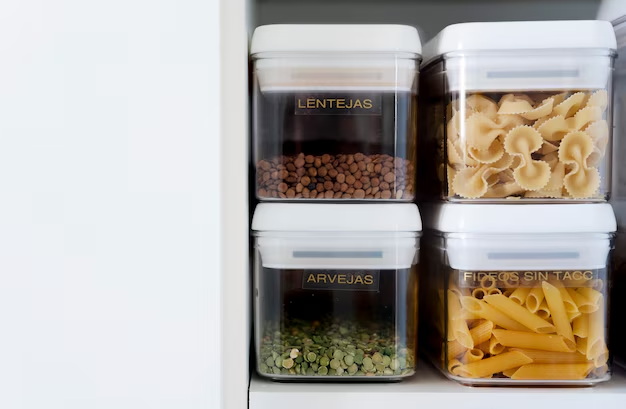How Long Can You Keep Cooked Sausage in the Fridge? A Practical Guide to Food Storage and Shelf Life 🍽️
When you've cooked a hearty batch of sausages and there's more than you can devour in one sitting, it's essential to know how long those tasty bites can remain safe to eat. Understanding the proper storage practices isn't just about preserving flavor—it's a matter of health and safety. Here's your comprehensive guide on storing cooked sausage in the refrigerator, complete with useful tips, related topics, and practical advice on maximizing freshness.
How Long Is Cooked Sausage Safe to Eat in the Refrigerator? 🚦
Cooked sausages can typically last in the fridge for three to four days. This time frame ensures the meat retains its quality and remains safe to consume. However, this duration hinges on how well you store the sausage initially.
Factors Affecting Shelf Life ⌛
Storage Temperature: Your refrigerator should be set to below 40°F (4°C) to keep bacteria at bay, thereby prolonging the sausage's shelf life.
Packaging and Containers: Use airtight containers or wrap the sausages in aluminum foil or plastic wrap. This prevents air and moisture from entering, which can speed up spoilage.
Time from Cooking to Storage: It's advisable to refrigerate cooked sausages within two hours after cooking to minimize bacterial growth.
Recognizing Spoilage: When to Bid Goodbye to Your Sausages 🚫
While the general guideline suggests a three to four-day window, it's crucial to recognize signs of spoilage. Consuming spoiled sausage can lead to foodborne illnesses. Here are some warning signs:
- Off Smell: Fresh sausages will have a savory aroma, but spoilage gives them a sour, rancid smell.
- Color Changes: Sausages should maintain their natural color. Discoloration, often gray or greenish, signals spoilage.
- Texture: Slimy or tacky textures indicate bacterial growth and spoilage.
Staying vigilant about these signs ensures you keep health risks at bay.
Tips for Extending the Shelf Life of Cooked Sausage 📦
To make the most of your cooked sausages, consider these practical storage tips:
Label and Date Your Storage: Always mark the date when you store sausages. This helps track their consumption timeline.
Divide Portions: Rather than storing all sausages in a single container, divide them into smaller, meal-sized portions. This reduces the amount of time each is exposed to air when retrieving a portion.
Freezing for Long-term Storage: If you won't consume the sausages within four days, freezing is an excellent option. Cooked sausage can last in the freezer for up to two months. To freeze, wrap them tightly in foil or plastic before placing them in a freezer bag.
Quick Storage Tips Summary 🔍
- Use airtight containers or wraps.
- Store below 40°F (4°C).
- Freeze if not consumed within four days.
Related Topics: Diving Deeper into Sausage Storage 🔍
Understanding how to store sausages effectively connects to broader food storage practices. Let's explore some related areas:
Understanding Food Storage Basics 🗄️
Proper storage practices extend beyond sausages. Knowledge about keeping various foods fresh can result in less waste and better meal planning. Here are foundational tips for general food storage:
- FIFO Principle (First In, First Out): Practice using older food items first to prevent spoilage.
- Use Clear Containers: Transparent containers allow easy monitoring of food quality without opening them.
The Importance of Refrigeration and Freezing 🧊
Refrigerators and freezers slow bacterial growth, making them indispensable for food storage. Here’s how they help:
- Refrigeration slows enzyme activity.
- Freezing halts most bacterial growth.
Navigating the World of Food Labels 🏷️
Food labels provide valuable storage and freshness information. Understanding terms like “sell by” and “use by” dates can aid in navigating food content and safety:
- "Sell By" Date: Indicates how long a store should display a product. It's not a safety date.
- "Use By" Date: Usually the last recommended date for peak quality but not a strict safety demarcation, especially for non-perishable goods.
Safe Reheating Practices 🍽️
Reheating leftovers, including sausages, is common, yet it demands care:
- Ensure Uniform Heating: Foods should reach at least 165°F (74°C) to ensure any bacteria are killed.
- Use Microwave Safely: Cover food to ensure moisture retention and even heating.
Empower Yourself with Knowledge 💪
Arming yourself with storage knowledge equips you with the skills to manage your kitchen efficiently and keep your foods delicious and safe. Next time you're wondering whether to consume that leftover sausage or how to store it properly, remember these handy insights.
Practical Tips for Food Safety at Home Checklist 📝
Below is a quick checklist to guide you on maintaining food safety and maximizing storage efficiency:
- ✅ Check fridge temperature regularly to ensure it's below 40°F (4°C).
- ✅ Label everything with dates to track freshness.
- ✅ Keep a food use calendar on your fridge for easy reference.
- ✅ Reheat leftovers to 165°F (74°C) or above.
- ✅ Stay informed about food safety practices and continuously educate yourself.
With these tips, you'll be ready to tackle food storage challenges head-on, limiting waste and taking full advantage of your purchases.
Embrace these strategies and techniques to maintain the freshness and safety of your food products. Not only will this save you money, but it will also ensure you're eating safely and healthily. Keep your kitchen organized, your meals fresh, and your family safe with informed food storage practices! 🍽️
